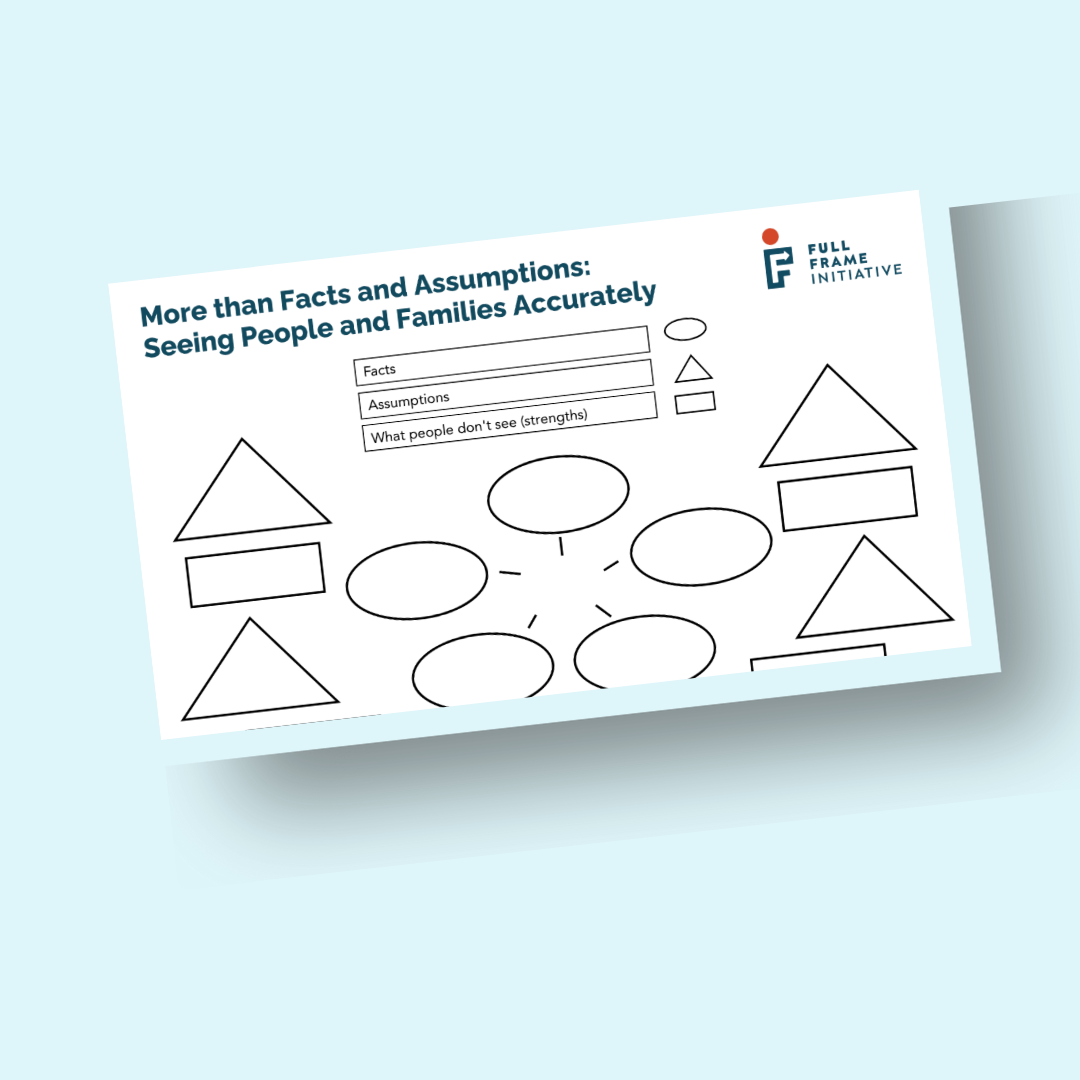
This exercise and facilitator guide can help you outline facts and assumptions we make about someone.
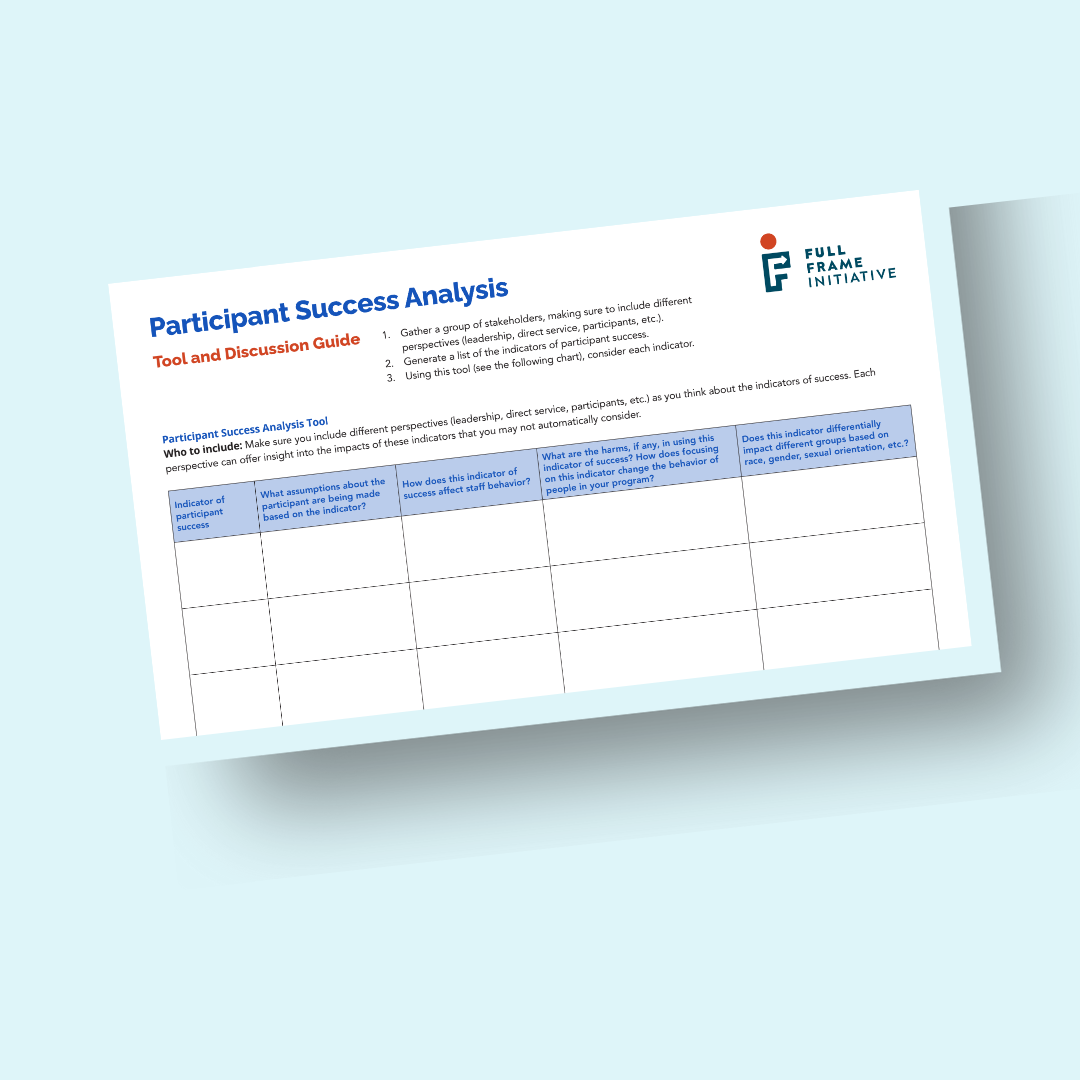
This tool provides a list of questions to consider when analyzing data and indicators of success for program participants.

When supervisors review paperwork, here's how to reinforce a wellbeing framework.

Examples of behaviors and tradeoffs that an individual may do related to the "Safety" domain.

When organizations use and understand the welbeing framework, they have some principles in common.
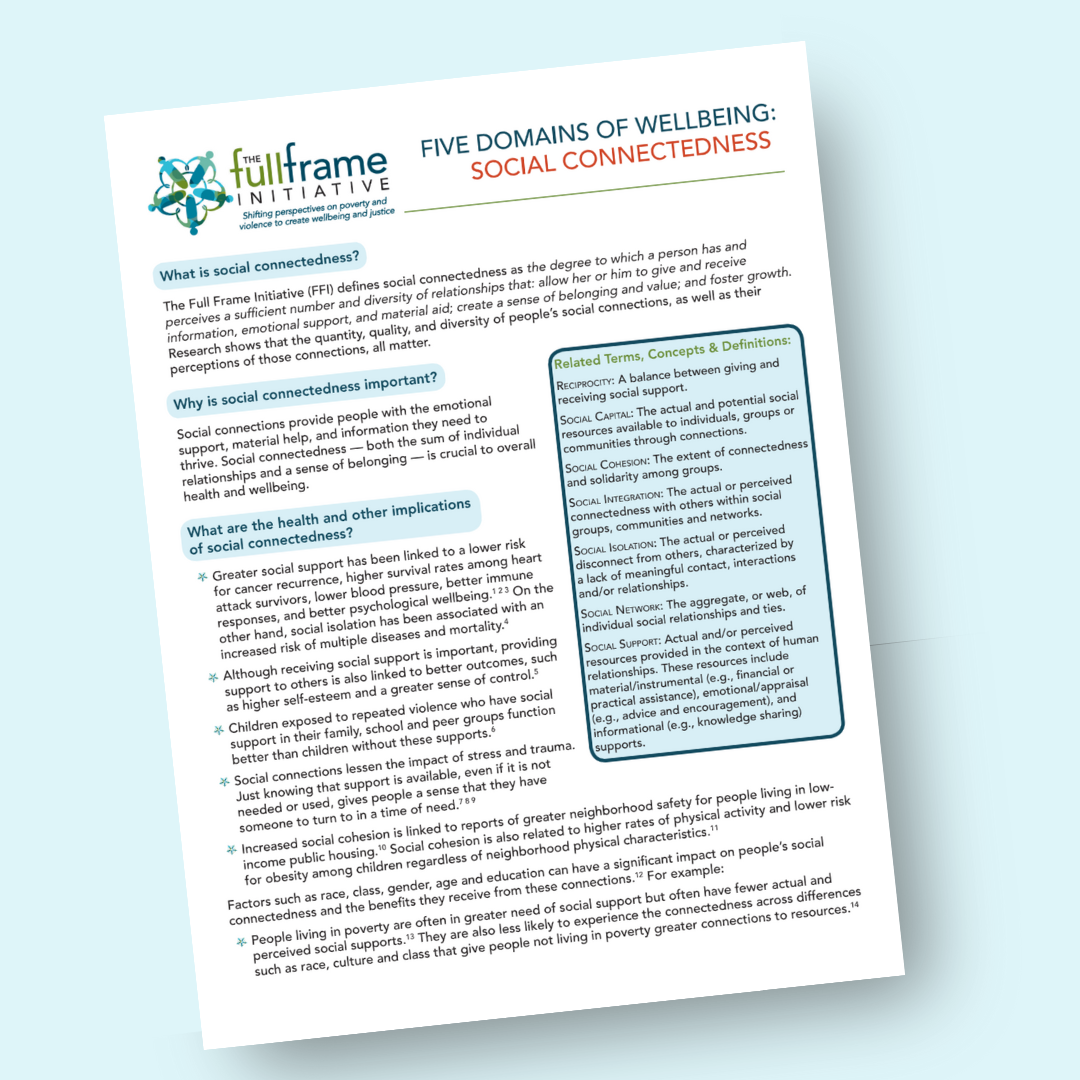
Overviews on each of the Five Domains of Wellbeing‚ what they are, why they are important, related terms, concepts, and definitions, relationship with health, and connections to other domains.
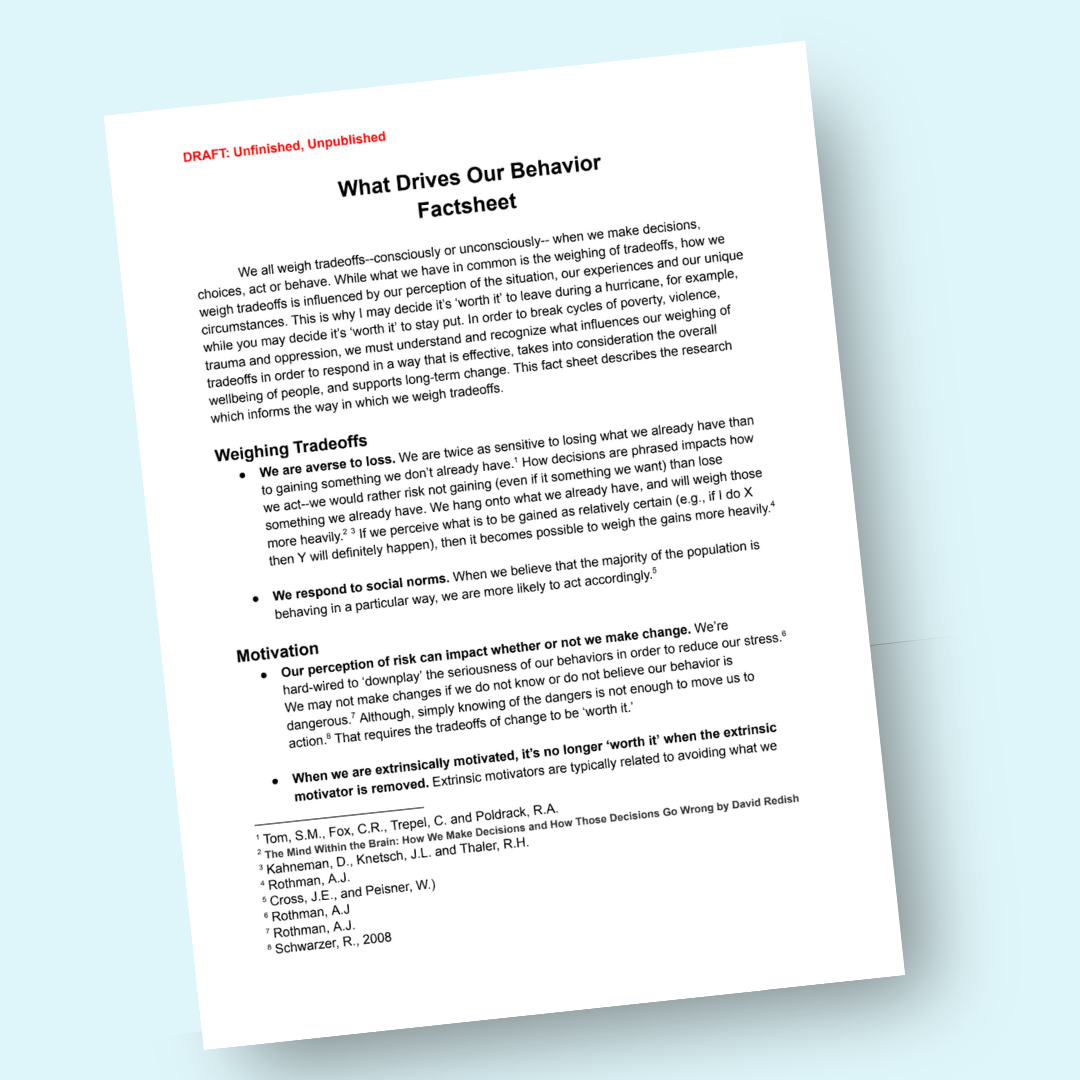
This document explores what drives behavior, analyzing tradeoffs, motivation, and strategies for sustainable behavior change.
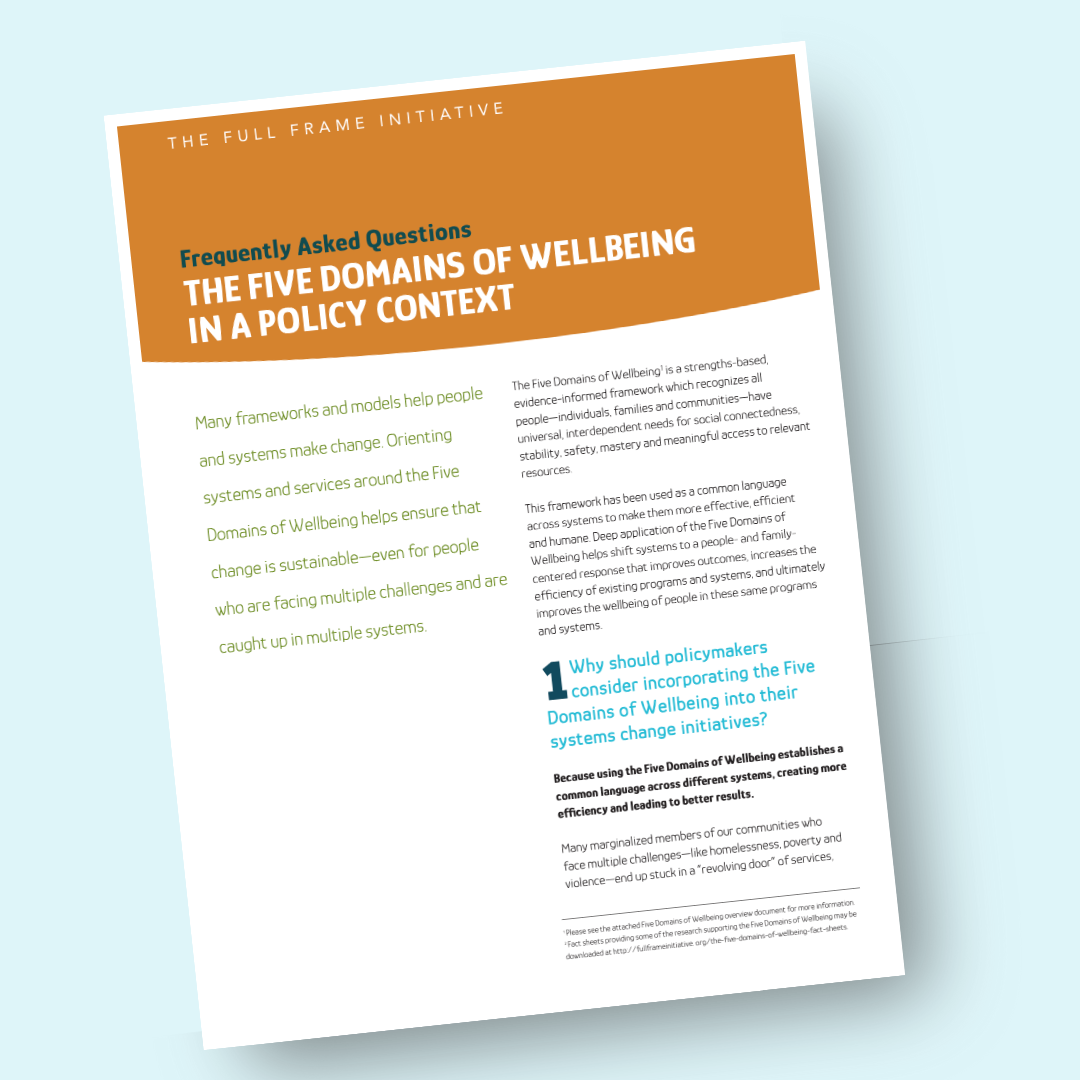
This FAQ helps to explain how an understanding of the Five Domains of Wellbeing and tradeoffs can be useful in a policy context.

This worksheet can be used to support families and caregivers to support youth interacting with the juvenile justice system.
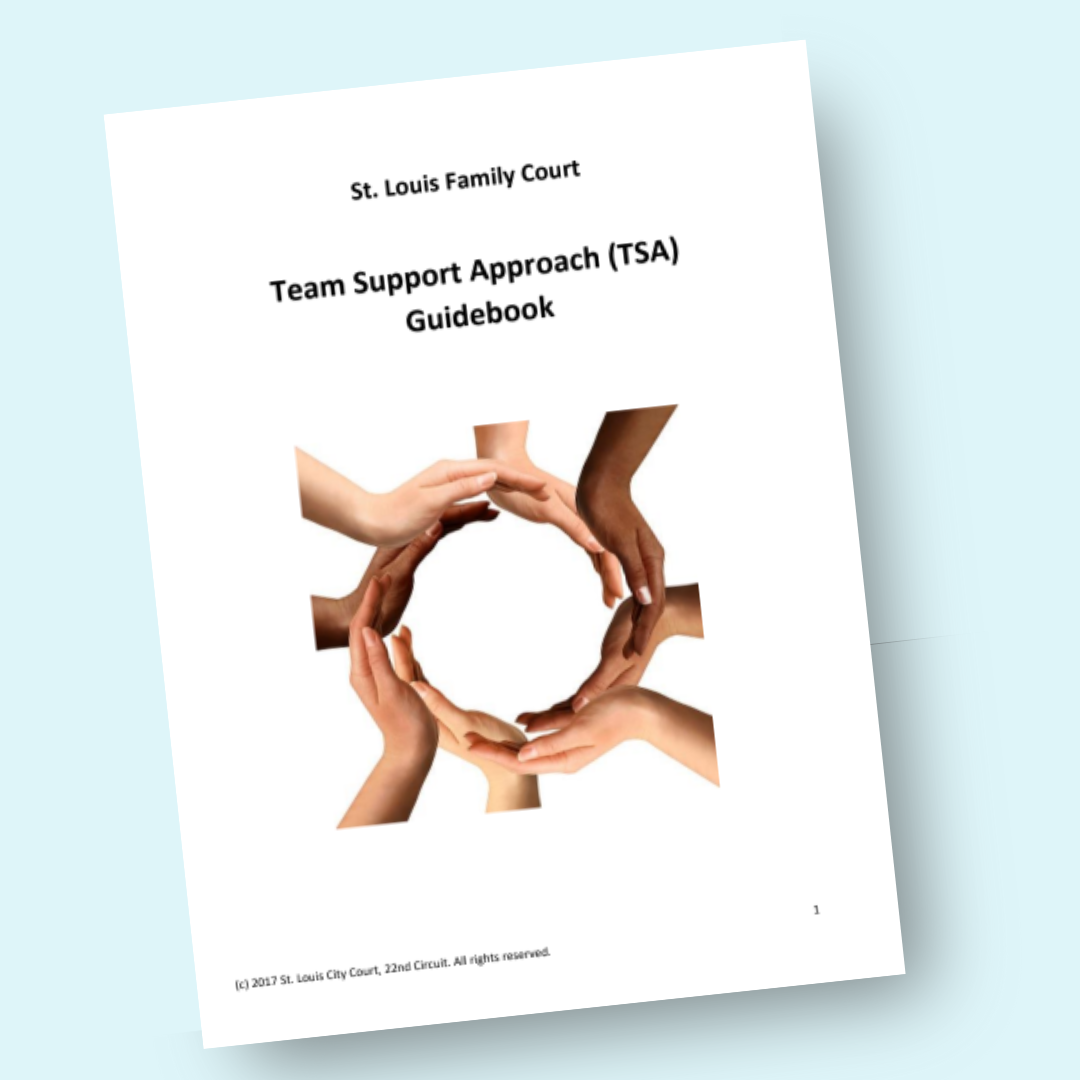
This guide helps key individuals around a youth interacting with the juvenile justice system discuss the youth's strengths and needs, identify and provide resources, and make strengths-based plans to increase the youth's access to wellbeing.
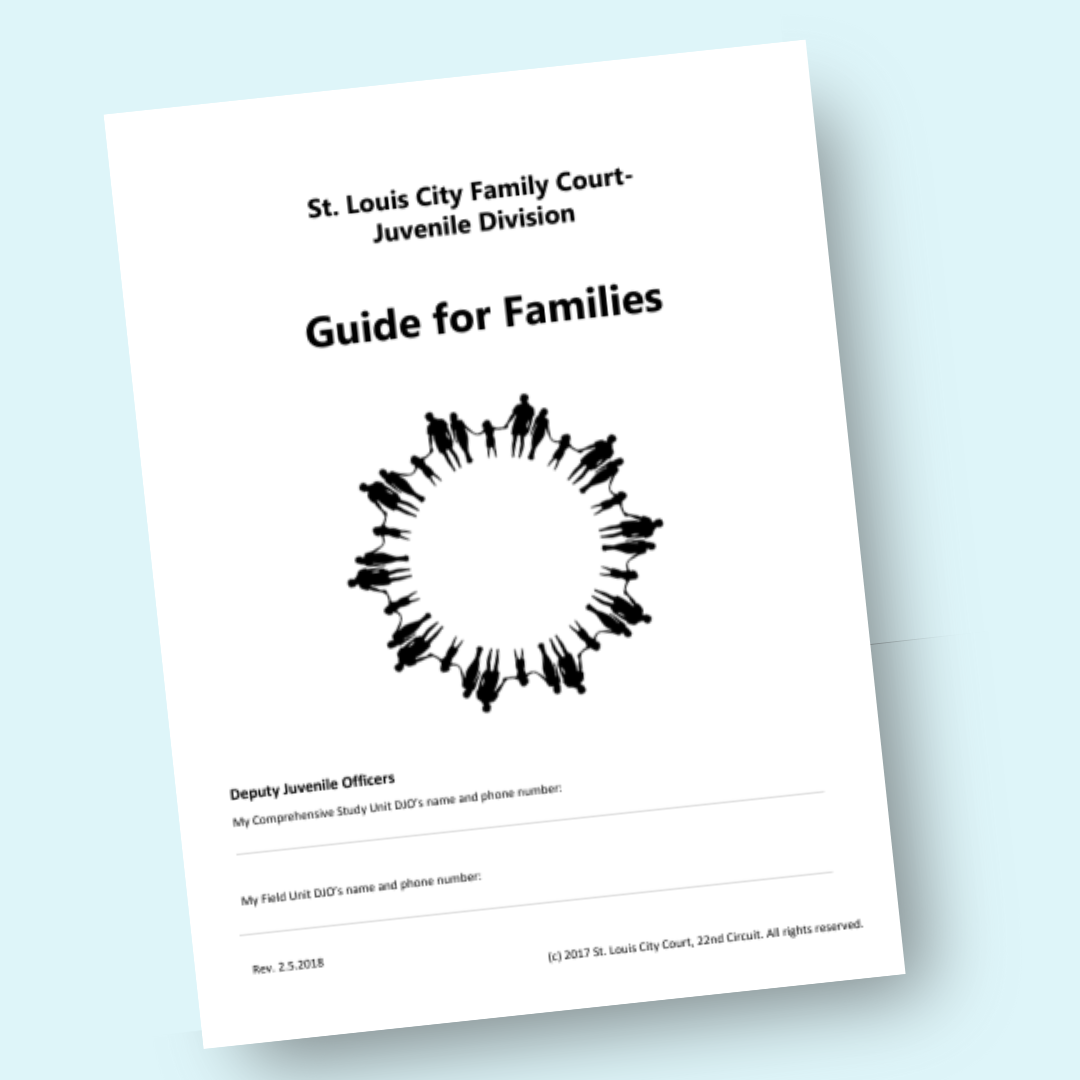
This guide is meant to set clear expectations for youth and families interacting the juvenile justice system.
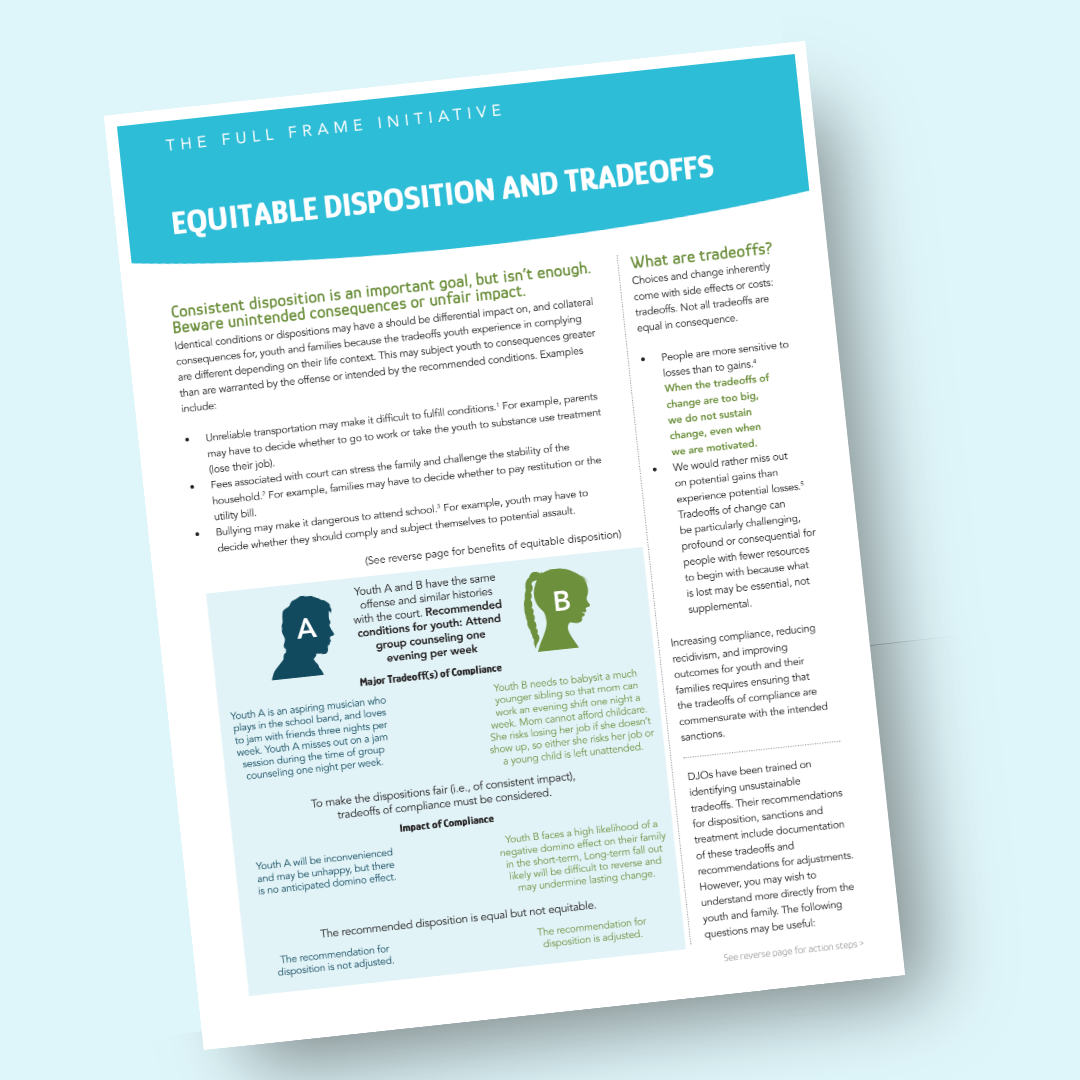
In the justice system, sentences that seem equal on face value may actually have significant differential impacts when you look at an individual's life situation and circumstances.